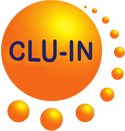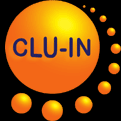Search Result
UNDERSTANDING THE DYNAMICS OF ENHANCED LIGHT NON-AQUEOUS PHASE LIQUIDS (LNAPL) REMEDIATION AT A POLLUTED SITE: INSIGHTS FROM HYDROGEOPHYSICAL FINDINGS AND CHEMICAL EVIDENCE
Ciampi, P., G. Cassiani, G.P. Deidda, C. Esposito, P. Rizzetto, A. Pizzi, and M.P. Papini.
Science of The Total Environment 932:172934(2024)
Filed Under: Cleanup News
Filed Under: Cleanup News
An innovative technology combining ISCO and enhanced desorption was applied at a petroleum hydrocarbon-contaminated site to treat residual LNAPL and enhance the effectiveness of groundwater extraction and the treatment systems. The enhanced remediation system included reagent injections of PetroCleanze® (a desorbent) and RegenOx® (an oxidizer) into the subsurface to stimulate the desorption and oxidation of residual hydrocarbons, mobilizing them for subsequent extraction. Real-time subsurface dynamics were investigated through geophysical monitoring, employing electrical resistivity tomography (ERT) to trace reagent migration pathways via their effect on bulk electrical conductivity. Integrating groundwater sampling data aimed to provide additional insights into the transformations of contaminants in the spatiotemporal context. Vivid 2D time-lapse ERT sections showcased the evolution of resistivity anomalies, providing high-resolution evidence of heterogeneity, dispersion pathways of desorbent and oxidant, and residual LNAPL mobilization. Hydrochemical analyses revealed effective mobilization processes with increasing groundwater concentrations of TPH over time. Speciation analysis showed the interplay of desorption and oxidation, portraying the dynamic fractionation of hydrocarbon components. The hydrogeophysical and data-driven framework provided qualitative and quantitative insights into reagent and contaminant distribution, enhancing the understanding of spatial and temporal physio-chemical changes during the remediation process. Coupling hydrogeophysical and chemical findings provided insight into the transformation of contaminants following the sequence of product injection and the push and pull activities, capturing the removal of mobilized contaminants through hydraulic barrier wells. This enhanced understanding proves instrumental in optimizing and tailoring remediation efforts, especially in heterogeneous environmental settings. https://www.sciencedirect.com/science/article/pii/S004896972403081X/pdfft?md5=7f8bd852bdc9abe94609440d9472dae6&pid=1-s2.0-S004896972403081X-main.pdf
Science of The Total Environment 932:172934(2024)
Filed Under: Cleanup News
Filed Under: Cleanup News
An innovative technology combining ISCO and enhanced desorption was applied at a petroleum hydrocarbon-contaminated site to treat residual LNAPL and enhance the effectiveness of groundwater extraction and the treatment systems. The enhanced remediation system included reagent injections of PetroCleanze® (a desorbent) and RegenOx® (an oxidizer) into the subsurface to stimulate the desorption and oxidation of residual hydrocarbons, mobilizing them for subsequent extraction. Real-time subsurface dynamics were investigated through geophysical monitoring, employing electrical resistivity tomography (ERT) to trace reagent migration pathways via their effect on bulk electrical conductivity. Integrating groundwater sampling data aimed to provide additional insights into the transformations of contaminants in the spatiotemporal context. Vivid 2D time-lapse ERT sections showcased the evolution of resistivity anomalies, providing high-resolution evidence of heterogeneity, dispersion pathways of desorbent and oxidant, and residual LNAPL mobilization. Hydrochemical analyses revealed effective mobilization processes with increasing groundwater concentrations of TPH over time. Speciation analysis showed the interplay of desorption and oxidation, portraying the dynamic fractionation of hydrocarbon components. The hydrogeophysical and data-driven framework provided qualitative and quantitative insights into reagent and contaminant distribution, enhancing the understanding of spatial and temporal physio-chemical changes during the remediation process. Coupling hydrogeophysical and chemical findings provided insight into the transformation of contaminants following the sequence of product injection and the push and pull activities, capturing the removal of mobilized contaminants through hydraulic barrier wells. This enhanced understanding proves instrumental in optimizing and tailoring remediation efforts, especially in heterogeneous environmental settings. https://www.sciencedirect.com/science/article/pii/S004896972403081X/pdff
The Technology Innovation News Survey welcomes your comments and
suggestions, as well as information about errors for correction. Please
contact Michael Adam of the U.S. EPA Office of Superfund Remediation
and Technology Innovation at adam.michael@epa.gov or (703) 603-9915
with any comments, suggestions, or corrections.
Mention of non-EPA documents, presentations, or papers does not constitute a U.S. EPA endorsement of their contents, only an acknowledgment that they exist and may be relevant to the Technology Innovation News Survey audience.





